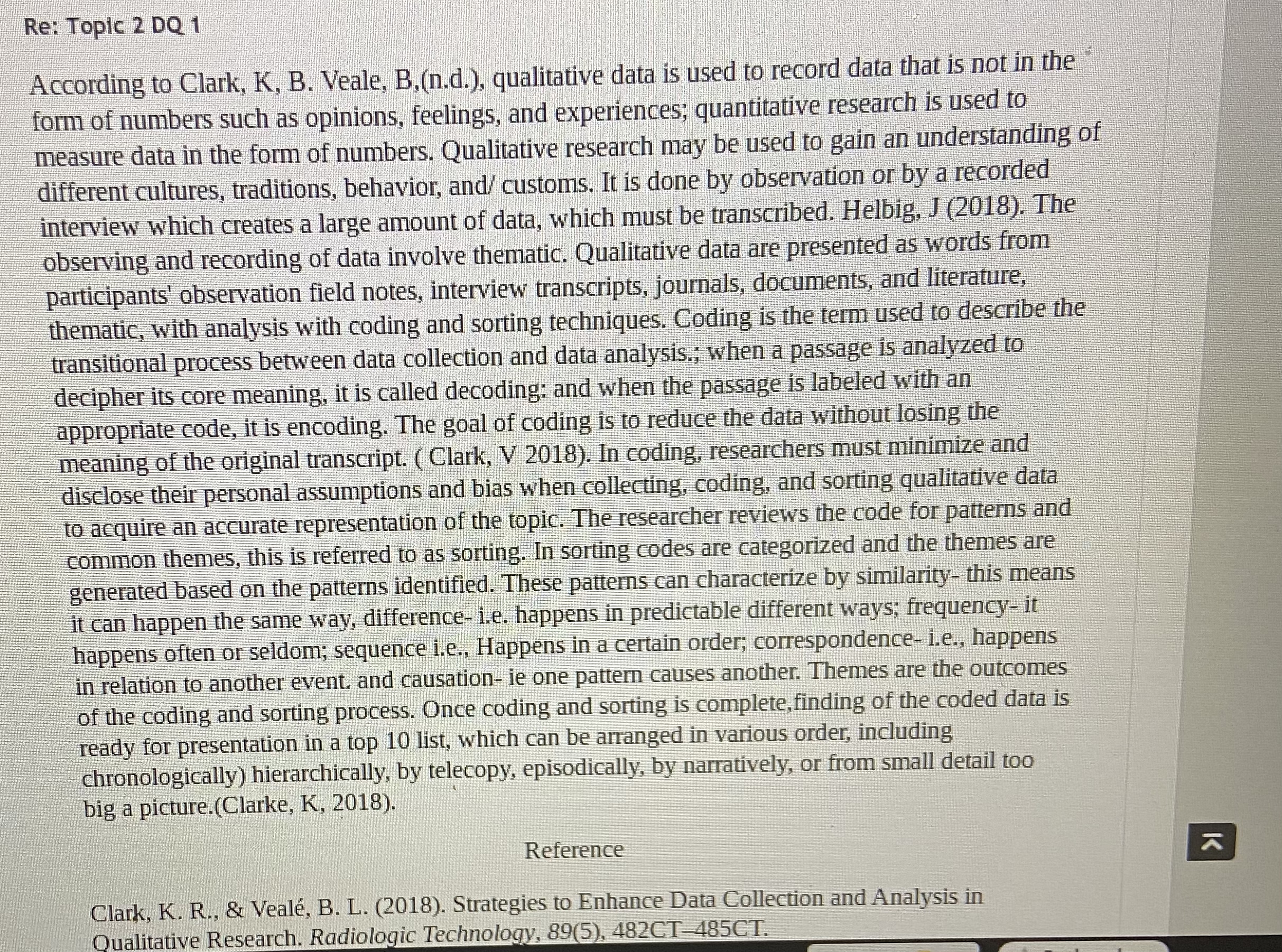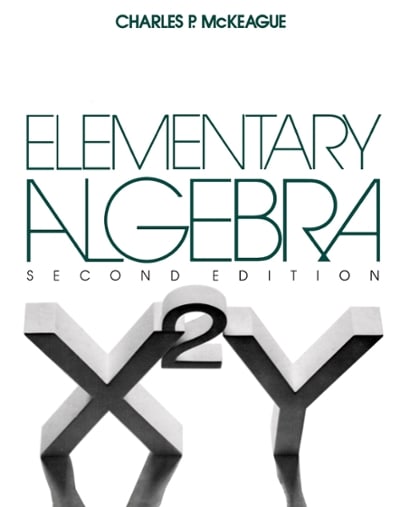An example how is coding used to describe the transitional process between data collection and data analysis? How is qualitative data is used to record data that is not in the form of numbers such as opinions, feelings, and experience? Provide an example? Just for a reply , based on that post below . Add some references, thank you.
Re: Topic 2 DQ 1 According to Clark, K. B. Veale, B.(n.d.), qualitative data is used to record data that is not in the form of numbers such as opinions, feelings, and experiences; quantitative research is used to measure data in the form of numbers. Qualitative research may be used to gain an understanding of different cultures, traditions, behavior, and/ customs. It is done by observation or by a recorded interview which creates a large amount of data, which must be transcribed. Helbig, J (2018). The observing and recording of data involve thematic. Qualitative data are presented as words from participants' observation field notes, interview transcripts, journals, documents, and literature, thematic, with analysis with coding and sorting techniques. Coding is the term used to describe the transitional process between data collection and data analysis.; when a passage is analyzed to decipher its core meaning, it is called decoding: and when the passage is labeled with an appropriate code, it is encoding. The goal of coding is to reduce the data without losing the meaning of the original transcript. ( Clark, V 2018). In coding, researchers must minimize and disclose their personal assumptions and bias when collecting, coding, and sorting qualitative data to acquire an accurate representation of the topic. The researcher reviews the code for patterns and common themes, this is referred to as sorting. In sorting codes are categorized and the themes are generated based on the patterns identified. These patterns can characterize by similarity- this means it can happen the same way, difference- i.e. happens in predictable different ways; frequency- it happens often or seldom; sequence i.e., Happens in a certain order; correspondence- i.e., happens in relation to another event. and causation- ie one pattern causes another. Themes are the outcomes of the coding and sorting process. Once coding and sorting is complete, finding of the coded data is ready for presentation in a top 10 list, which can be arranged in various order, including chronologically) hierarchically, by telecopy, episodically, by narratively, or from small detail too big a picture.(Clarke, K, 2018). Reference Clark, K. R., & Veale, B. L. (2018). Strategies to Enhance Data Collection and Analysis in Qualitative Research. Radiologic Technology, 89(5), 482CT-485CT







